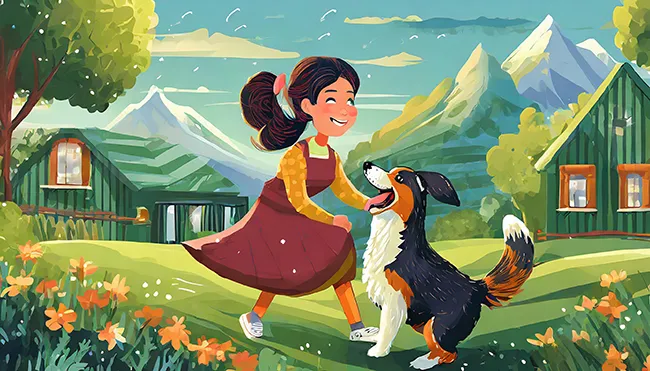
Ensuring your furry companion’s happiness extends beyond the fundamentals of food and shelter; it also includes recognizing and catering to their specific wants and aspirations. Understanding how to keep your dog happy requires a combination of physical care, emotional support, and cerebral stimulation. A happy dog is not only enjoyable to be around, but it also lives a better, more fulfilling life. This book will go over the different ways you can make your dog happier, from regular exercise and adequate diet to the priceless power of love and devotion. Whether you are a new pet owner or want to improve your current furry friend’s life, these tips will help you provide the finest care possible, building a strong and gratifying link between you and your dog.
Table of Contents
- Understanding Your Dog’s Needs
- Enrichment
- Nutritional Health
- Comfortable Living Environment
- Health Care and Grooming
- Love and Affection
- Verbal Praise and Positive Reinforcement
- Conclusion
Understanding Your Dog’s Needs

To ensure your dog’s happiness and well-being, you must first understand and meet his basic needs. These needs can be broadly classified as physical exercise, mental stimulation, socialization, and love and affection. Each of these categories is important for your canine companion’s health, behavior, and overall quality of life.
Regular Exercise and Playtime
Socialization
Getting your dog properly socialized is a vital step toward raising a happy, well-balanced dog. Without the proper socialization, your dog may be fearful of strangers, may act aggressively towards other dogs or children, and may develop severe anxiety disorders.
While socialization isn’t always a pleasant experience, it is important for any dog. It can increase your dog’s confidence, encourage positive reactions, and make social experiences more enjoyable.
The right socialization can improve your dog’s overall happiness, reduce his anxiety levels, and make vet visits less stressful. Your dog will also learn to behave more appropriately in unfamiliar environments. It is important to remember that socialization does not happen overnight. It is a lifelong endeavor. You should always continue to socialize with your dog, even when it seems like he is mature enough to handle new situations on his own.
Dogs are naturally curious and always want to learn. They will encounter many strange situations throughout their lives, so socialization is key to keeping your dog happy. It is much more effective even than seeing a giant animatronic dinosaur.
Socialization is the process of introducing a dog to a variety of new people, places, and objects. This can involve trips to dog parks, doggie daycare, or even a visit to your vet.
When socializing your dog, you will want to introduce new sights, sounds, and stimuli in a gradual manner. This is important to avoid too much too soon, which may affect your puppy for the rest of his life.
Physical Exercise
Despite what many people think, exercise is an essential part of a dog’s life. Exercise helps your dog release stress, release pent-up energy, and maintain a healthy body and mind. Exercise also reduces anxiety and depression.
Regular exercise promotes a strong bond with your dog and encourages more restful sleep. Exercise can also help keep your dog lean.
The amount of exercise you need to give your dog depends on your dog’s age, breed, and size. Most dogs require at least 30 minutes of moderate exercise every day. If you have a dog with medical issues, you should work with your veterinarian to devise an exercise plan.
You should also keep an eye out for signs of exhaustion. A tired dog may display signs of boredom. A bored dog may engage in inappropriate behavior. It is also essential to keep your dog’s water supply full.
In addition to exercising, you should provide your dog with plenty of love and attention. A bored dog may revert to destructive behaviors such as chewing. Exercise is the best way to alleviate boredom and promote restful sleep.
A great way to engage your dog in exercise is to play fetch. This game helps to build muscle and strengthen the bond between you and your dog.
Another game is hide-and-seek. This game helps to burn excess energy and provides mental stimulation. You can also add in chase games.
Mental stimulation
Mental stimulation, like physical exercise, helps to keep your dog’s brain active and engaged. Dogs are intelligent creatures who require mental stimulation to stay happy and healthy. Puzzle toys, training sessions, and games like hide and seek with treats can be great mental workouts. Teaching new tricks or commands also strengthens your bond with your pet while keeping their cognitive functions sharp.
Love and Affection
Love and affection, perhaps the most basic yet profound needs, serve as the foundation for your relationship with your dog. Regular physical contact, such as petting, cuddling, and grooming, as well as verbal praise and quality time together, all help to strengthen your relationship. Dogs thrive on the attention and affection of their owners, and this emotional support is critical to their overall well-being.
Treats
Providing treats to your dog is not only a way to bond with your pet but it can also reinforce good behaviors and discourage bad ones. However, before you start giving your dog treats, you should first ensure that the treats are safe for your dog’s health.
Some of the best treats to give your dog are made with natural ingredients. These include peanut butter and honey. Other ingredients to look for include oats, pumpkin seeds, and peanuts. You should also be careful of snacks with added sugar or fat. These can cause obesity and dental problems.
You should also keep in mind that dogs are social animals. It is a good idea to make your dog’s day a bit more interesting by playing a game with him. For example, you can hide a treat in an empty cardboard box and have your dog find it. After a while, you can try hiding the treat again.
Another fun way to make your dog happy is by visiting friends and family. Your dog is very social and will enjoy visiting people and going out in the car.
When you are playing fetch with your dog, you can make the game more interesting by rotating the placement of treats. For example, you can give your dog a treat every time he gets back to you after calling him.
You can also try making treats yourself. You can use ingredients such as peanut butter, honey, oats, and pumpkin seed. You can mix all these ingredients together in a food processor and freeze them until they set. This will make them last longer.
Enrichment

Adding enrichment to your dog’s life will not only make them happy, but it will also improve their behavior. It is easy to incorporate enrichment into your dog’s daily routine.
Dogs have complex needs. They need mental stimulation, physical exercise, and ways to practice their natural instincts. Without these activities, they can become bored and frustrated and may even engage in destructive behaviors.
Canine enrichment provides your dog with fun and creative ways to exercise their natural instincts. These activities will also help to alleviate boredom and anxiety, and increase their psychological and physical well-being.
Dogs’ senses are extremely sensitive. They have a natural tendency to forage and sniff. Dog puzzles are a great way to engage their senses, while also working their brains. These puzzles can be created from items you have around the house or purchased from a company like the Canine Wellness Academy. Using an empty muffin tin, you can create a dog puzzle that involves sifting through kibble and dog treats.
Puzzles are also a great way to provide your dog with choices. Allowing your dog to choose the type of treat, whether or not to approach a person, and how to walk through a door are all good ways to provide enrichment.
Adding an interactive toy can also help to fill the void your dog may feel when left alone at home. Before purchasing one, think about your dog’s energy level. Buying something that your dog will not enjoy can end up being a waste of time.
Nutritional Health
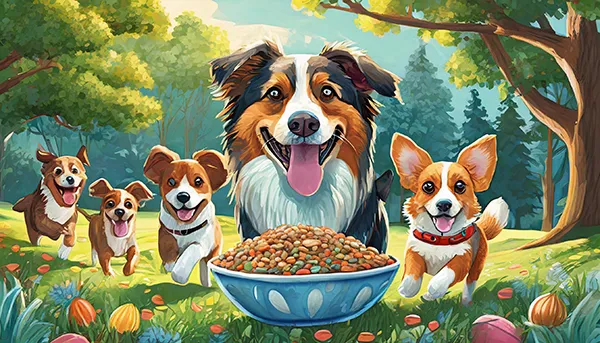
Nutritional wellness is an essential component of keeping your dog happy and healthy. Understanding how to give your dog a balanced meal and provide continual access to fresh water are critical components of basic canine care.
Feeding Your Dog a Balanced Diet
A well-balanced diet is essential for your dog’s general health, as it affects everything from their energy levels and weight to the condition of their coat and skin. Here are some guidelines for selecting the correct food for your dog’s age, size, and health requirements:
- Age-Specific Nutrition: Dogs’ nutritional demands vary depending on their life stage. Puppies, for example, require high-protein meals to maintain their rapid growth, but senior dogs may require fewer calories and more joint-supporting elements. Look for dog food labeled for certain life phases (puppy, adult, and senior).
- Consider Size and Breed: The size and breed of your dog also play a significant role in their dietary needs. Small breed dogs may need smaller kibble sizes and a diet that prevents them from gaining too much weight, while large breeds might require food that supports joint health and prevents bloating.
- Health Conditions and Allergies: Dogs with health conditions such as diabetes, kidney issues, or food allergies may require special diets. Consult with your veterinarian to choose a diet that supports their specific health needs.
- Quality of Ingredients: Look for foods where the first ingredient is a specified meat (e.g., chicken or beef, rather than “meat by-products”) and that contain minimal fillers, artificial colors, or preservatives.
- Portion Control: Overfeeding is a common problem that can lead to obesity and related health issues. Follow the feeding guidelines on your dog’s food packaging as a starting point, adjusting as necessary based on your dog’s activity level and weight.
The Importance of Hydration
Water is essential for your dog’s health, playing a critical role in every bodily function. Here are key points emphasizing the need for constant access to fresh water:
- Supports Vital Functions: Water aids in digestion, helps regulate body temperature, facilitates nutrient absorption, and eliminates waste.
- Prevents Dehydration: Dogs can become dehydrated quickly, especially in hot weather or after exercise. Signs of dehydration include lethargy, dry gums, and excessive panting.
- Fresh Water Availability: Always ensure your dog has access to clean, fresh water. Change the water at least once a day, and make sure the water bowl is clean to encourage your dog to drink regularly.
- Hydration Checks: You can monitor your dog’s hydration levels by checking their gums (they should be wet and slippery) and performing the skin elasticity test (the skin should spring back when gently pinched).
Proper nutrition and hydration are vital to your dog’s health and happiness. By providing a balanced diet tailored to their specific needs and ensuring they always have access to fresh water, you can help maintain their optimal health and vitality. If you have any concerns about your dog’s diet or hydration, consult with a veterinarian who can provide personalized advice and recommendations.
Comfortable Living Environment
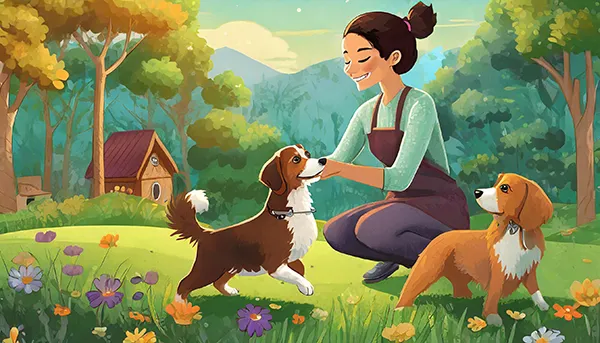
Creating a comfortable living environment for your dog is essential for their physical and emotional well-being. A key aspect of this involves providing safe and secure surroundings, as well as establishing a routine that offers stability. Let’s delve into these components:
Safe and Secure Surroundings
Ensuring your dog has a safe, comfortable place to rest and sleep is fundamental to their sense of security and overall health. Here are some guidelines to achieve this:
- Adequate Shelter: Whether your dog spends most of their time indoors or outdoors, they require an area that keeps them safe from the weather. Indoors, this may be a comfortable bed in a quiet spot. Outside, it is necessary to have a protected place that protects from heat, cold, rain, and wind.
- Safe Spaces: Dogs appreciate having a designated area where they can retreat and feel safe. This could be a crate or a bed placed in a low-traffic area of your home. Ensure this space is free from hazards, such as small objects they might chew on or toxic plants.
- Temperature Control: Dogs can be sensitive to extreme temperatures. Ensure your home is appropriately heated during cold months and cooled during hot months to keep your dog comfortable.
- Secure Boundaries: Fences, gates, and secure doors are crucial to prevent your dog from wandering off and facing dangers such as traffic or aggressive animals. Regularly check the integrity of these boundaries to ensure they are escape-proof.
Routine and Stability
A consistent routine for feeding, walks, and bedtime not only helps in managing your dog’s expectations but also contributes to their emotional well-being. Here’s why routine and stability are essential:
- Predictability Reduces Anxiety: Dogs thrive on predictability. Knowing what to expect from their day helps reduce anxiety and stress, leading to a happier, more relaxed pet.
- Health and Digestive Benefits: Regular feeding times help regulate your dog’s digestive system, making it easier to manage their dietary needs and prevent issues such as obesity or gastrointestinal distress.
- Behavioral Improvements: A stable routine can lead to better behavior. Dogs with a regular schedule for walks, playtime, and rest are less likely to develop destructive habits out of boredom or excess energy.
- Strengthened Bond: Consistently spending time with your dog during these routine activities strengthens your bond, enhancing the trust and affection between you and your pet.
Incorporating these aspects into your dog’s daily life helps create a nurturing environment that caters to their physical needs and psychological comfort. A safe and secure living space, coupled with the predictability of a routine, allows your dog to thrive, ensuring they are not only well-cared for but genuinely happy and content.
Health Care and Grooming
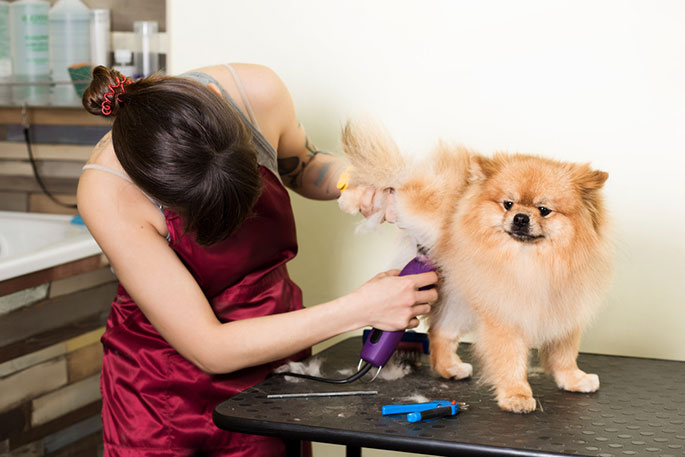
Maintaining your dog’s health involves regular veterinary care and proper grooming practices. These aspects are crucial for preventing diseases, ensuring comfort, and promoting overall well-being.
Regular Vet Check-ups
Regular visits to the veterinarian are essential for keeping your dog healthy. These check-ups typically include:
- Vaccinations: Essential for preventing various diseases. Your vet will recommend a vaccination schedule based on your dog’s age, lifestyle, and health status.
- Flea, Tick, and Worm Treatments: Parasite control is crucial for your dog’s comfort and health, as well as for the hygiene of your home. Your vet can recommend effective products based on your dog’s specific needs.
- Overall Health Assessment: Regular check-ups allow the vet to monitor your dog’s health over time, including weight, dental health, and early detection of any potential health issues.
Adhering to a regular veterinary schedule helps ensure that your dog remains healthy, and any concerns can be addressed promptly.
Grooming and Hygiene
Grooming is not just about keeping your dog looking good; it’s also vital for their health:
- Coat Care: Regular brushing removes dirt, spreads natural oils throughout the coat, prevents matting, and can help you spot fleas or skin issues early.
- Nail Trimming: Overgrown nails can cause pain and lead to problems walking or running. Regular trimming helps prevent these issues.
- Ear Cleaning: This helps prevent ear infections, especially in breeds with floppy ears.
- Dental Care: Regular teeth cleaning, whether at home or professionally, helps prevent gum disease and tooth loss.
Proper grooming contributes to your dog’s overall comfort and well-being, reducing the risk of skin problems and infections.
Love and Affection
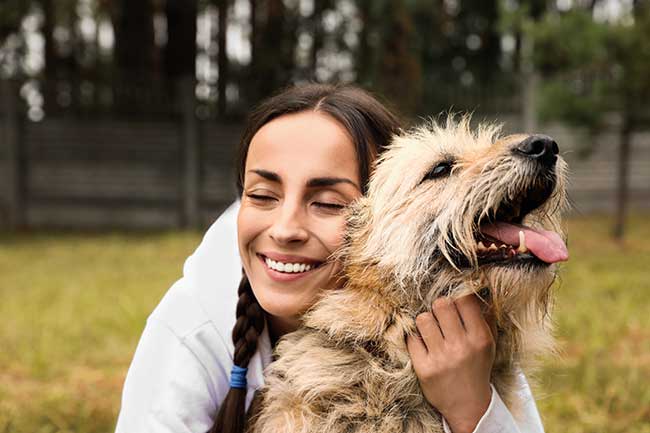
The emotional bond between you and your dog is built on love and affection, which are as important as their physical health needs.
The Power of Touch
Physical contact like petting, cuddling, and gentle stroking can have a profound effect on your dog’s emotional state:
- Stress Reduction: Physical contact helps reduce anxiety and stress in dogs.
- Bond Strengthening: These interactions deepen the bond between you and your dog, fostering a sense of security and belonging.
- Communication: Touch is a way of communicating your love and affection, reassuring your dog of your care and presence.
Verbal Praise and Positive Reinforcement
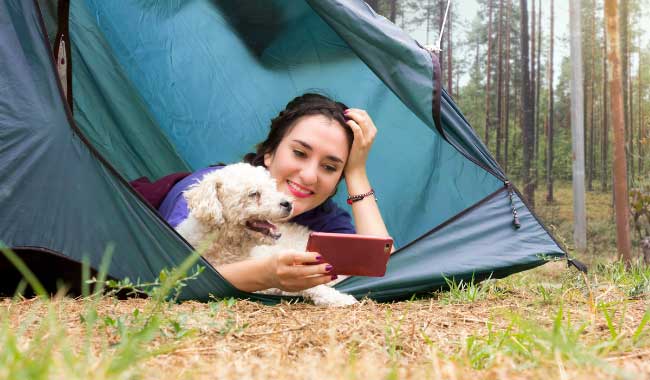
Using positive reinforcement is a powerful method to encourage good behavior and strengthen your relationship:
- Behavioral Training: Rewards and praise make learning new commands and behaviors more effective and enjoyable for your dog.
- Emotional Support: Positive reinforcement also supports your dog’s emotional well-being, making them feel valued and understood.
- Building Confidence: Regular praise can boost your dog’s confidence, making them more sociable and less fearful in new situations.
Incorporating regular health care, grooming, and showing love and affection are key elements in ensuring your dog’s happiness and well-being. These practices not only keep your dog healthy and well-groomed but also reinforce the emotional bond between you, creating a deeper, more meaningful relationship.
Conclusion
Ensuring the happiness and well-being of our canine companions requires a comprehensive approach that addresses their physical, emotional, and social needs. From a well-balanced diet and regular exercise to creating a safe and comfortable living environment, each aspect is critical to their overall health. Regular vet check-ups and grooming keep them physically healthy, while love, affection, and positive reinforcement promote emotional health, strengthening the bond between dog and owner.
Meeting these needs entails not only fulfilling basic requirements but also enriching our dogs’ lives. It ensures that they live a happy, healthy life with a solid connection to their human families. Understanding and addressing these issues will guarantee that our furry friends not only survive but thrive, bringing us immeasurable happiness and love in return.



